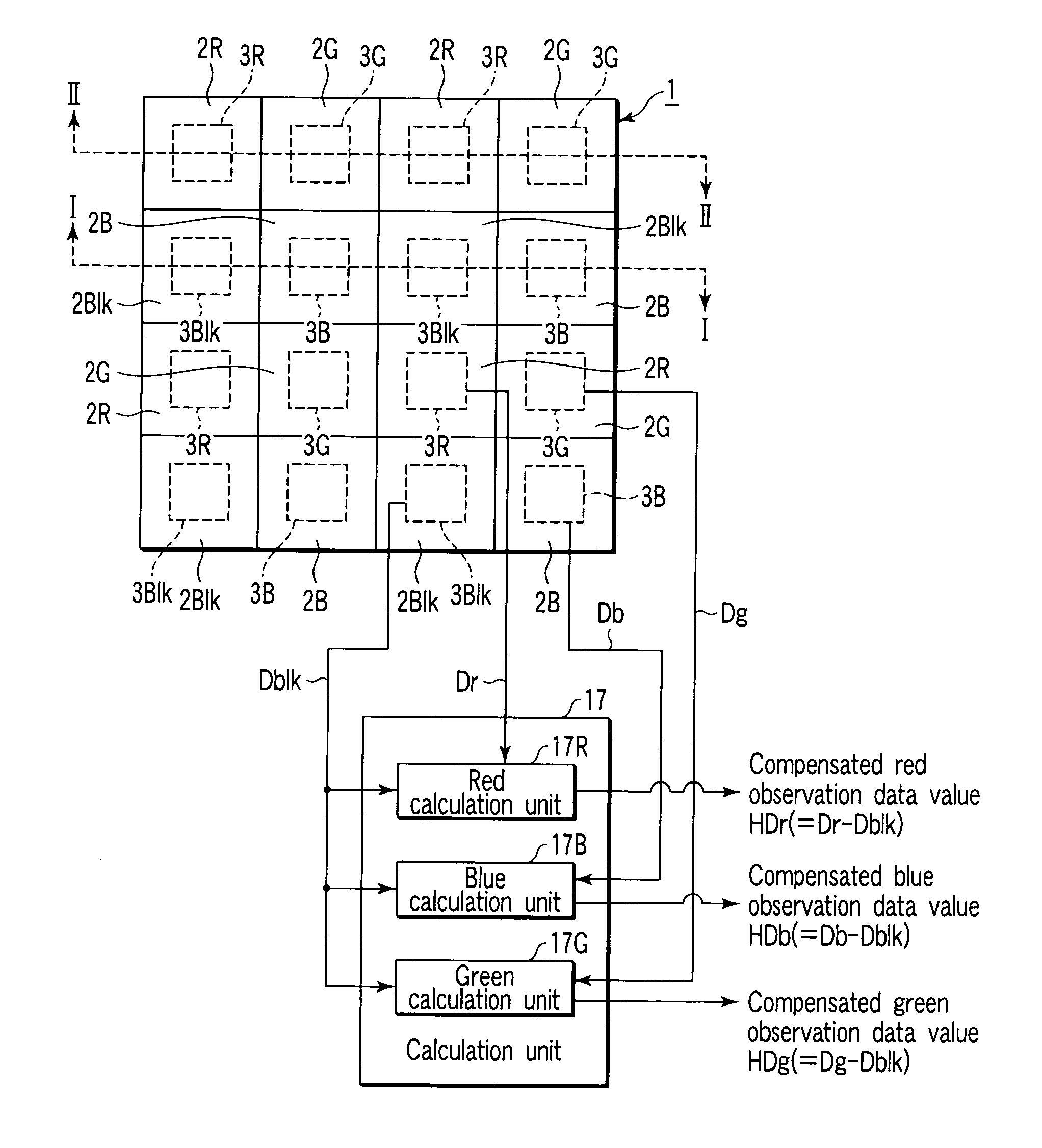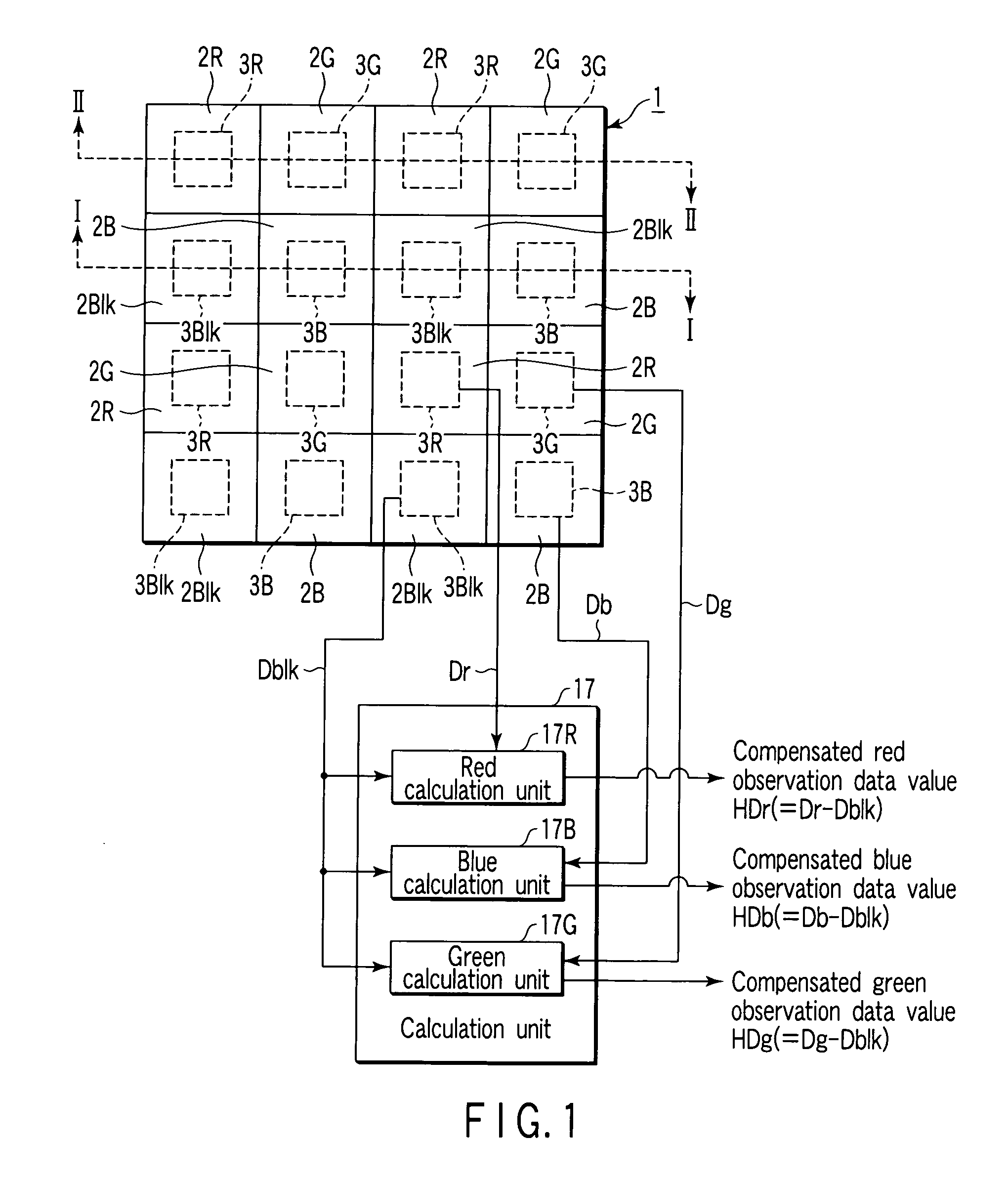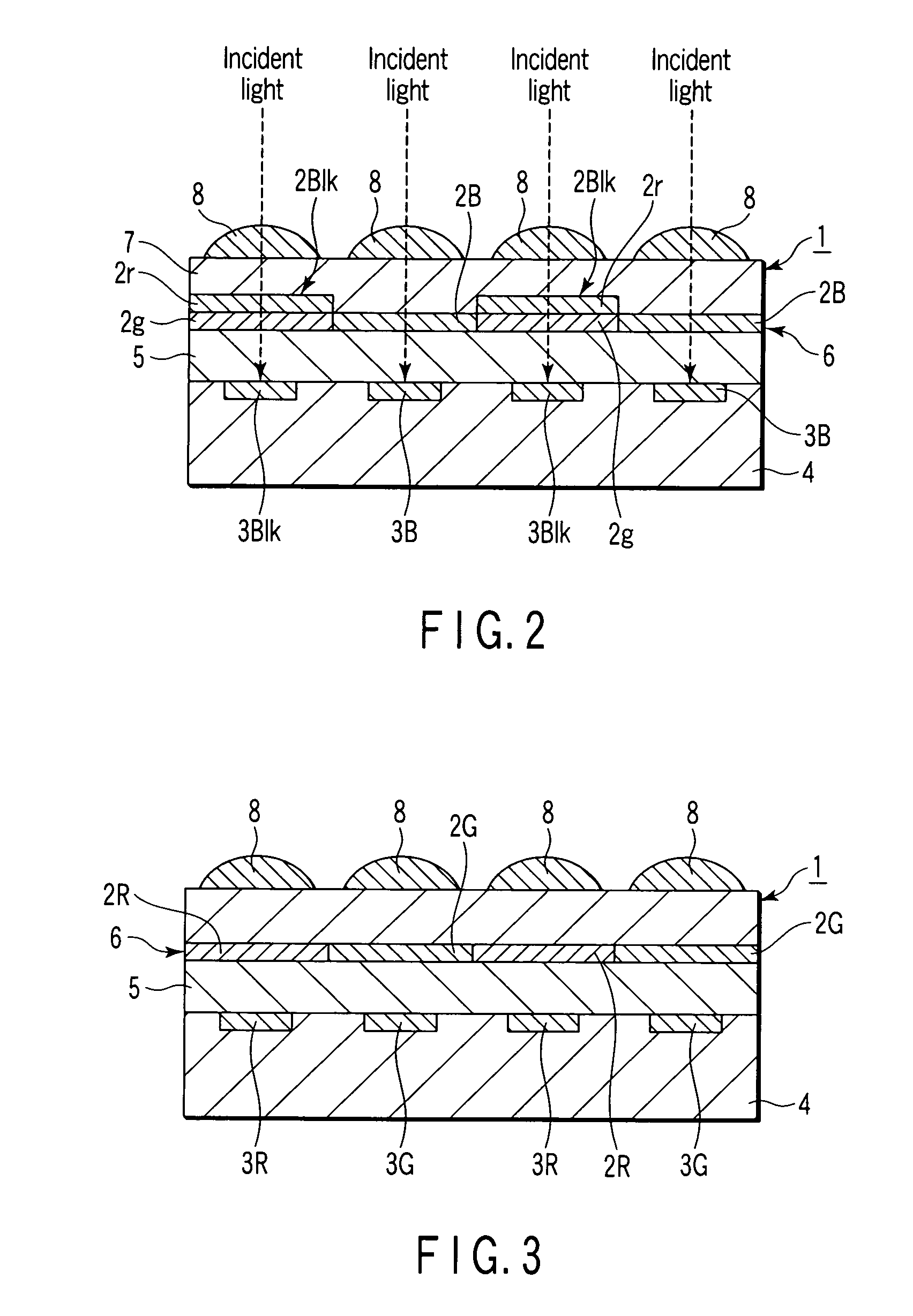Image sensor
a technology of image sensor and image, which is applied in the direction of optical radiation measurement, radiation control device, instruments, etc., can solve the problems of difficult to realize a sufficient cutting function with respect to infrared rays with angles such as oblique incidence, difficulty in miniaturization of cameras, and difficulty in color separation in infrared range. achieve the effect of improving color performance properties
- Summary
- Abstract
- Description
- Claims
- Application Information
AI Technical Summary
Benefits of technology
Problems solved by technology
Method used
Image
Examples
first embodiment
[0103] In this embodiment, an image sensor included in, for example, a digital camera, a portable phone, a video camera, a linear sensor, a scanner, or the like will be explained.
[0104] In this embodiment, the image sensor has color filters disposed on a light incident side of light receiving elements, for allowing an observation of color components of an observation target.
[0105] In this embodiment, the image sensor comprising compensating filters having transmittances in an infrared range higher than a transmittance in a visible light wavelength range in addition to spectral filters used for extracting each of green, blue and red components out of an incident light will be explained.
[0106] As the spectral characteristics of the compensating filters, transmission restraining characteristics are provided in the visible light wavelength range and transmission characteristics in the infrared range.
[0107]FIG. 1 is a front view showing an example of an installation state of three co...
second embodiment
[0190] In this embodiment, a modified example of the above-mentioned first embodiment will be explained.
[0191] In the above-mentioned first embodiment, for reducing the difference between the transmittance of the spectral filter 2G and the transmittance of the spectral filter 2B in the infrared range and adjusting the transmittance in the infrared range, the characteristic of restraining the transmittance in the wavelength range including 780 nm is provided in the resin layer 7.
[0192] On the other hand, in this embodiment, the green spectral filter 2G itself is provided with a characteristic of restraining the transmittance in the wavelength range including 780 nm as the infrared range. Thereby, the color separation can be enabled in the same manner as in the above-mentioned first embodiment.
[0193] In order to restrain the transmittance in the wavelength range including the 780 nm wavelength in the infrared range, an organic pigment may be added to the green spectral filter 2G. M...
third embodiment
[0198] In this embodiment, a modified embodiment of the above-mentioned first and second embodiments will be explained. In the above-mentioned first and second embodiments, the compensating filter 2Blk comprises the green filter element 2g and the red filter element 2r.
[0199] On the other hand, in this embodiment, instead of the compensating filter 2Blk, a compensating filter comprising a blue filter element and a red filter element is used.
[0200]FIG. 8 is a front view showing an example of an arrangement state of the three color spectral filters 2G, 2B, 2R and the compensating filter in the image sensor according to this embodiment. In FIG. 8, an example viewed from the light incident side is shown. In FIG. 8, the calculation unit 17 is omitted.
[0201]FIG. 9 is a diagram showing an example of a cross section of the image sensor. FIG. 9 shows the cross section taken along a line III-III of FIG. 8.
[0202] The image sensor 9 comprises a compensating filter 10Blk instead of the compe...
PUM
 Login to View More
Login to View More Abstract
Description
Claims
Application Information
 Login to View More
Login to View More - R&D
- Intellectual Property
- Life Sciences
- Materials
- Tech Scout
- Unparalleled Data Quality
- Higher Quality Content
- 60% Fewer Hallucinations
Browse by: Latest US Patents, China's latest patents, Technical Efficacy Thesaurus, Application Domain, Technology Topic, Popular Technical Reports.
© 2025 PatSnap. All rights reserved.Legal|Privacy policy|Modern Slavery Act Transparency Statement|Sitemap|About US| Contact US: help@patsnap.com



